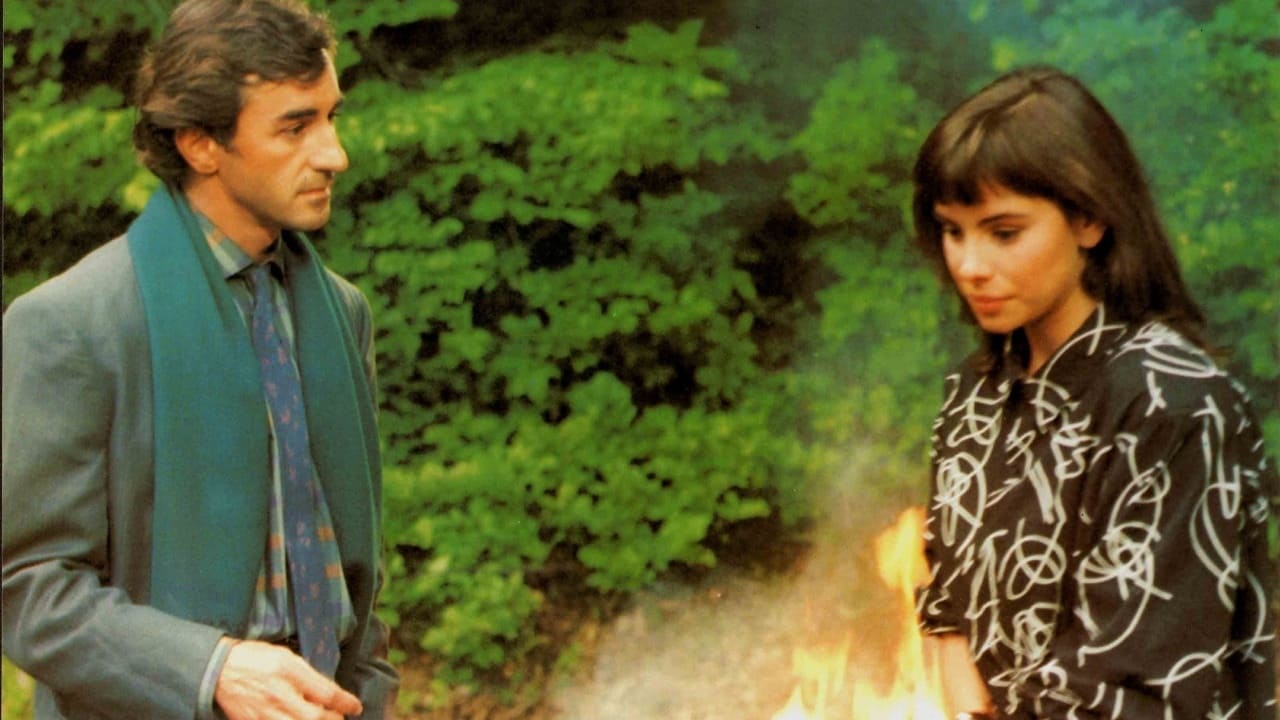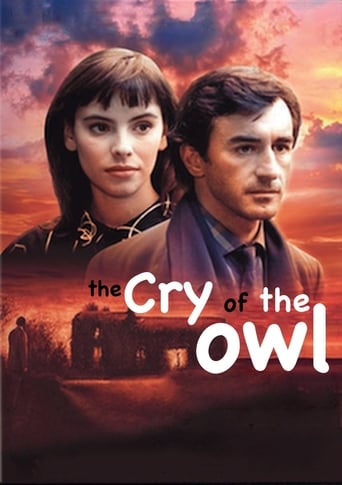Dynamixor
The performances transcend the film's tropes, grounding it in characters that feel more complete than this subgenre often produces.
Gurlyndrobb
While it doesn't offer any answers, it both thrills and makes you think.
Sabah Hensley
This is a dark and sometimes deeply uncomfortable drama
Kinley
This movie feels like it was made purely to piss off people who want good shows
MARIO GAUCI
I had wanted to buy this one for a long time, but repeatedly postponed it due to the excessive price-tag of the DVD and the criticism leveled at the quality of the transfer (which was decent to my eyes even on a 40" TV monitor, if somewhat dark and with the burnt-in subtitles being intrusively large and bafflingly situated towards the middle of the screen!). Anyway, I eventually took the plunge not too long ago and am extremely glad I did – what with the accompanying Audio Commentary alone proving value for money! The film is a well-regarded effort from Chabrol's middle period, given added prestige by being adapted from the work of celebrated crime novelist Patricia Highsmith. Incidentally, it makes for an excellent example of the director's admiration for Alfred Hitchcock (who had himself brought Highsmith's STRANGERS ON A TRAIN to the screen back in 1951), building suspense and goading the audience into complicity in much the same way as the acknowledged master of the form – though the noir trappings of the narrative (and, by extension, the expressionistic quality of the cinematography here) actually derives from Fritz Lang, another strong influence.The plot – reportedly, a very faithful rendition of the novel – seems simple enough at first: a slightly disturbed man (about to be divorced) spies on a beautiful neighbor and, when he finally confronts her, realizes that she is herself essentially unbalanced (being willing to drop her current boyfriend and take up with him!); in this regard, the film reminded me a good deal of PRETTY POISON (1968). However, things get complicated when the boyfriend proves both jealous (though the male protagonist never actually consummates the affair!) and violent (even if he has to be saved from drowning himself when the situation comes to a head!), and even more so when the hero's malicious ex-wife becomes involved.Interestingly, when the boyfriend goes missing, not only is his 'rival' suspected by the Police but, in a delicious reversal of Chabrol's own LA FEMME INFIDELE (1968), the girl rejects rather than endorses him – to the point that she tragically takes her own life (the panoramic shot revealing her lifeless body amid the tall grass is a brilliant touch). Surprisingly, the latter stages turn into outright black comedy as the boyfriend's repeated bungled attempts on the hero's life leave many of those around him lying in a pool of blood – including the boyfriend himself and the ex-wife in the astounding climax (capped by an ambiguous freeze-frame which leaves the protagonist's destiny hanging in the balance).Another definite asset here is the well-chosen cast: while I was familiar with Mathilda May as the volatile heroine (best-known for playing the nude space vampire of Tobe Hooper's LIFEFORCE [1985] but who also had an important supporting role in Chabrol's recent A GIRL CUT IN TWO [2007]) and vaguely aware of Jean-Pierre Kalfon (portraying the bemused cop on the case), perhaps the most impressive was Christophe Malavoy in the central part (who proving a veritable magnet for disaster likens him with the lead character of Luis Bunuel's delightful 'non-serial killer' black comedy, THE CRIMINAL LIFE OF ARCHIBALDO DE LA CRUZ [1955]!). This analogy is also mentioned in the Audio Commentary featuring one Ric Menello and David Kalat (President of All Day Entertainment, which released the DVD) who provide a comprehensive, scholarly yet entertaining analysis of the film, its tortuous distribution background, as well as a broad look at Chabrol's prolific career.
MartinHafer
In general, I liked this movie. In particular, I liked the first half of it. The story also had lots of twists and turns that made it very interesting until somewhere towards the end. By that point, I felt there were so many plot twists that I just wanted a final resolution. Plus, when the end came, it just didn't satisfy me all that much.Instead, this is actually a film that might have been better had it stayed on target with the direction the plot ORIGINALLY headed. The idea of a stalker being discovered and then stalked by the victim is really interesting and the way this strange woman fell head over heels with the stalker was very interesting. BUT, then, inexplicably, she hates him and then kills herself. This is one too many plot twists--and, of course, there were more to follow.In conclusion, there were MANY MANY wonderful elements in the movie and a lot to like BUT the movie desperately could have used an editing.
Thorsten_B
This Chabrol movie seems to be almost forgotten - given the few comments printed here and given the fact that it's unlikely to be mentioned among the maestros masterpieces. Even though it is based on a novel by Patricia Highsmith, and has some degree of tension in it, "Le Cri du Hibou" doesn't really draw the viewer inside the small world of it's handful of characters. Everyone in this film seems to have his private neurosis, and when fate bonds them all together, an explosive mixture is the result. Unfortunately (and unusually for Chabrol) the narration is not clever enough to tantalize the viewer. Instead, quite a bunch of implausible elements make it hard to enjoy the unfolding of the story. Then again, since it is the story of a man regarded as threat by his surrounding without ever wanting to threat anyone, a man seen as guilty without guilt (or is there guilt at his hands?), Chabrol had to avoid all too much realism. An ultra-realistic view at the same story would stop at 40 minutes; it would not be able to display the ideas driving the characters to their deeds like Chabrol does. Seen through this perspective, the film is quite an interesting statement.
dbdumonteil
Patricia Highsmith's "cry of the owl" was not her best or even among her best;we are far from triumphs such as "the talented Mister Ripley" "Ripley's game " or "strangers on a train".But it was an interesting psychological study,focusing on a man who thought that, whatever he might do ,he was bound to fall and he would even bring bad luck to his human pals.Like a lot of HIghsmith 's characters ,he was a neurotic,who could not fit in the "normal world" ,with a heavy guilt feeling and a touch of masochism.Chabrol's screenplay is very faithful to the novel,keeping even the last line,but it's a good example of how accuracy leads to failure.The choice of Christophe Malavoy was excellent because the actor is subtle enough to convey such a despair .But Chabrol put him against a gallery of weirdos who would drive any man insane:a brunette whose behavior is completely implausible,played an unconvincing actress,Mathilda May;a vulgar unattractive wife -Ah Stephane Audran where are you ?- ;a brute of a fiancé who seems even more irrational than the hero,it's the last straw!On the paper the hero's thoughts and frames of mind made up for the implausibilities of the plot and built an atmosphere of ambiguity ,an ambiguity which is almost totally absent in the film,in spite of Malavoy's commendable efforts.To top it all,there's an irritating part of a cop (Kalfon) ,a la Colombo,gobbling up madeleines ,and hinting at Marcel Proust as he tries to remind his unusual suspect of what he may have done.Because,like in a lot of Chabrol movies,people eat in in "le cri du hibou".The hero and his lady friend treat themselves to some delicious crêpes suzette (flambées) and cassolettes of langoustines:the neurotic is also a gourmet !And he does love the girl's home-made cookies!Doing two movies a year,Chabrol makes frequently spotty works:such was the case of "le cri du hibou" , deservedly forgotten work,whereas the contemporary "masques " -released at the beginning of the same year- was a brilliant film noir turned almost farce.

